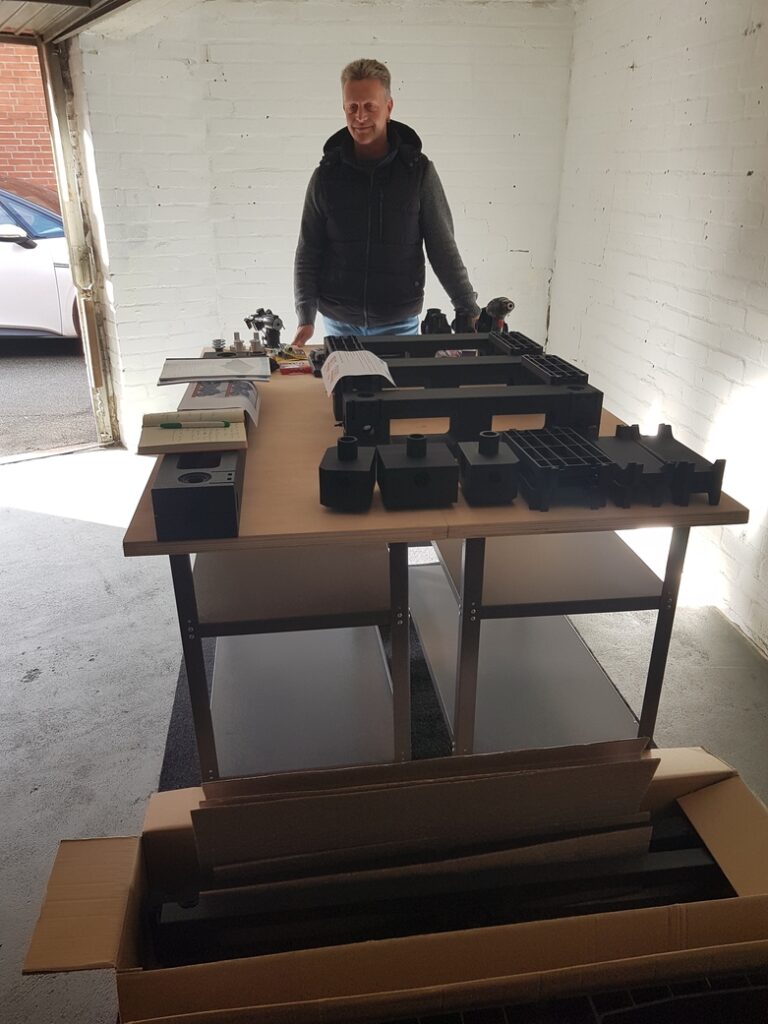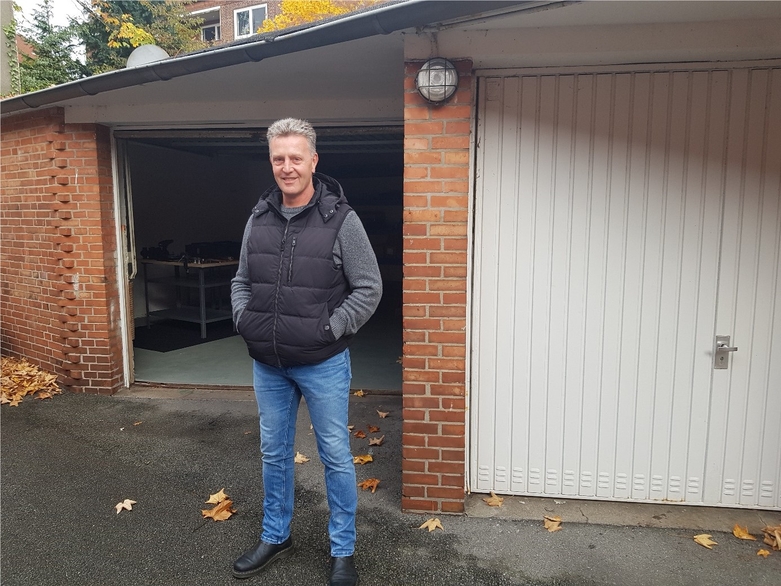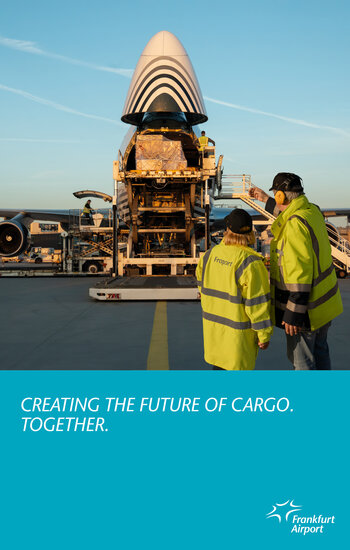And where is this being done? Hamburg-based newcomer, I:P:O Konstruktionen, like Apple, Amazon and HP and other successful start-ups before it, has begun its production in a garage. Even the iconic Walt Disney brand initially presented in a garage, and that is now going back more than 100 years. I:P:O Konstruktionen’s ground-breaking concept is a new modular load carrier system made of synthetic material. The product can lift air and sea freight supplies to the next level, including ground transportation of palletized goods, the company claims.
Each component seen on the table in the photo comes from a 3D printer. They were designed and constructed by mechanical engineer, Thomas Helpap, a technical inventor. The pieces belong to a new type of pallet system, tailored to the needs of freight forwarders, airlines, trucking companies and shipping lines.

1,500 kg load capacity
The product is conceived as an easy-to-use alternative platform to traditional wooden Euro pallets, as it offers superior quality and greater durability which translate into longer lifecycles and lower costs. It can fit loads weighing up to 1,500 kg. While wooden pallets last about six years, the smart platforms built by I:P:O Konstruktionen have a lifespan of 10 to 12 years, says the manufacturer. A substantial difference to its wooden peer of 120 cm x 80 cm stock size which weighs 25 kg in average, similar to the I:P:O platform. Weight is an important criterion for air freight transport, where every gram counts because it affects fuel burn and CO2 emissions.
The future market price depends on the number of units ordered and could vary between €30 and €50 per pallet, indicates Helpap.
As things stand today, manufacturer I:P:O Konstruktionen still has a long way to go to achieve market maturity and capture a significant share as there are currently approximately 680 million EURO pallets in use. Positioning the newcomer’s brand as an alternative product is likely to become a marathon.
One system, many use cases
The centerpiece of I:P:O’s synthetic platforms is the patented 3-axis interface which functions like a universal slot. It not only enables variable configurations of the pallet system, but also the seamless integration of logistics components such as plug-in rollers, couplings, frames, attachments, and other applications. It works easily, safely, and flexibly without requiring any specialist knowledge or tools. In other words: one system, many possible use cases. Thanks to its modular structure, each pallet can be individually configured, including, for instance, interchangeable pallet decks, integrated load cells, or RFID chips for digital tracking.
This turns the pallet into an intelligent data pool as integral part of supply chains, stresses manager Helpap. It provides information about weight, position, or frequency of use and helps to make transport or storage processes more efficient and transparent.

Pallet components built of recycled ocean plastic
Sustainability has been a key issue from day one, emphasizes Helpap. And that is clearly demonstrated by the material used to produce the pallets. They are made of all kinds of ocean plastic: PET bottles collected by volunteers at beaches, recycled ocean plastic, fishing nets floating in the water, or other flotsam that qualifies as a raw material. That is why I:P:O collaborates with specialists whose business model is to retrieve waste from the sea or rivers and recycle it. These are half a dozen firms. Among them: the SEAQUAL Initiative from Spain, Vancouver-based Canadian bottle remover, Plastic Bank, and the Dutch non-profit organization, Ocean Cleanup, to name just three.
It is still unclear as to when the modular pallet system will be available to logistics companies for use as a transport platform. Despite being granted a license, the manufacturer still needs important regulatory approvals such as breakage tests, fire safety tests, etc., for the pallets.
Hence, it will be some time yet before a new product developed in a garage can embark on its global career.




